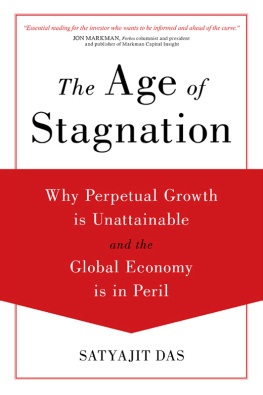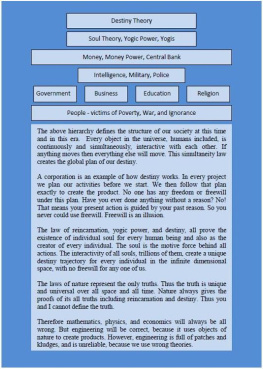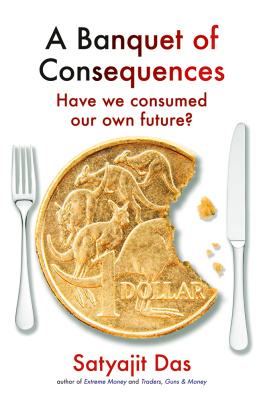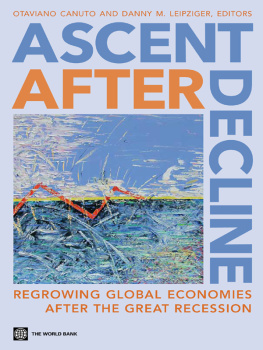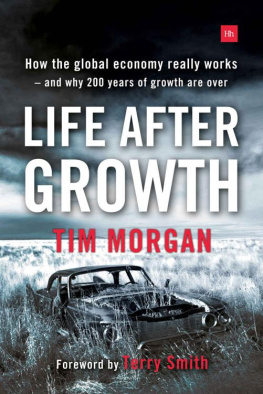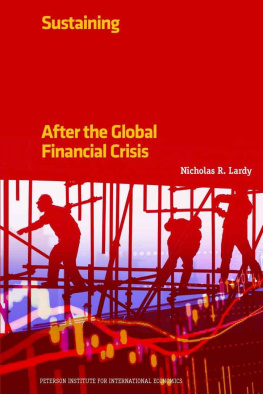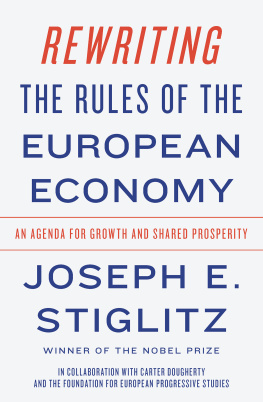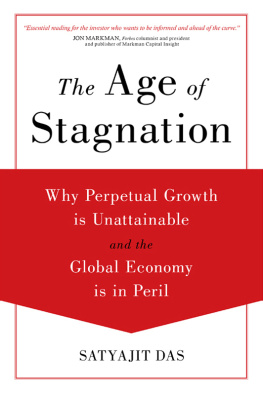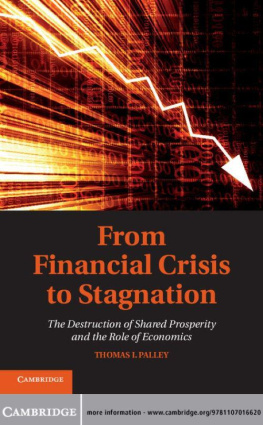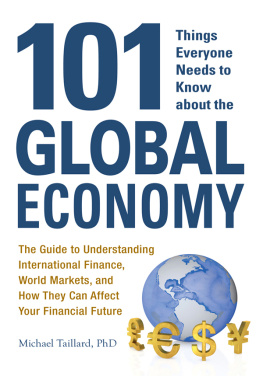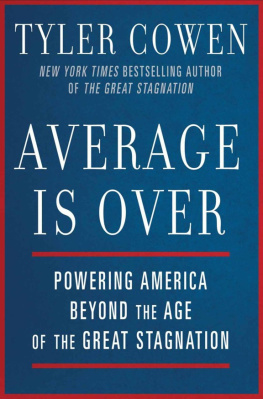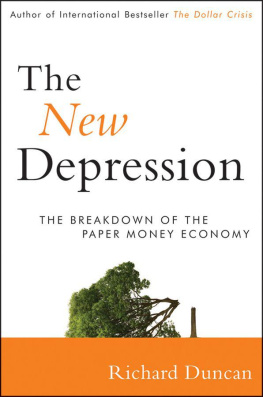
I would like to thank Ben Ball, Publishing Director at Penguin Australia for his brave and enthusiastic support for the book from inception.
A special thanks to my Australian editor, Meredith Rose, and Rebecca Bauert, who worked on the original Australian version. I would also like to thank Prometheus Books (editor in chief Steven L. Mitchell, senior editor Jade Zora Scibilia, and their team) for publishing this edition of the work for North America. Thanks also to Andrew Stuart of the Stuart Agency, who represented me.
The epigraph by George F. Kennan is from his book American Diplomacy 19001950, University of Chicago Press, 1951, p. 66. The second epigraph is attributed to George Orwell, but there is no evidence that he said or wrote it; see quote investigator.com/2013/02/24/truth-revolutionary. Grateful acknowledgment is made to the following for permission to reproduce copyrighted material: an extract (on page 7) from Mere Christianity by C. S. Lewis copyright CS Lewis Pte Ltd 1942, 1943, 1944, 1952. Reproduced by permission of The CS Lewis Company Ltd. Extracts (on pages 22122, 224) from George Orwell: Essays by George Orwell with an introduction by Bernard Crick. First published as The Collected Essays: Journalism and Letters of George Orwell volumes 14, Martin Secker & Warburg 1968. This edition Penguin Books 2000, copyright George Orwell and the Estate of Sonia Brownell Orwell, 1984. Introduction copyright Bernard Crick, 1994, copyright 1950 by Houghton Mifflin Harcourt Publishing Company, copyright renewed 1978 by Sonia Brownell. Reproduced by permission of Penguin Books Ltd; Bill Hamilton as the Literary Executor of the Estate of the Late Sonia Brownell Orwell and Houghton Mifflin Harcourt Publishing Company. All rights reserved.

Satyajit Das is a globally respected former banker and consultant with over thirty-five years experience in financial markets. He presciently anticipated, as early as 2006, the Global Financial Crisis and the subsequent sovereign debt problems, as well as the unsustainable nature of China's economic success. His early identification of the ineffectiveness of policy actions being taken by authorities to restore growth has also proved largely accurate. In 2014, Bloomberg nominated him as one of the fifty most influential financial thinkers in the world.
Das is the author of two international bestsellers, Traders, Guns & Money: Knowns and Unknowns in the Dazzling World of Derivatives (2006) and Extreme Money: The Masters of the Universe and the Cult of Risk (2011). He was featured in Charles Ferguson's 2010 Oscar-winning documentary Inside Job, the 2012 PBS Frontline series Money, Power & Wall Street, the 2009 BBC TV documentary Tricks with Risk, and the 2015 German film Who's Saving Whom.

Most of our people have never had it so good, British prime minister Harold Macmillan told his fellow citizens at a political rally in July 1957. He painted an optimistic picture of the postwar English economy, predicting an era of unparalleled prosperity. The phrase today is used to deride political promises. At the time, it was accurate. The output of steel, coal, and motor cars was increasing; export earnings and investment were rising; wages and living standards were improving.
Across the Atlantic, the United States was enjoying even more rapid growth and improvement in living standards. In 1960 John F. Kennedy, the first American president born in the twentieth century, in his speech accepting the Democratic nomination, spoke of conquering new frontiers, code for his administration's ambitious policy agenda. After his assassination, the Kennedy agenda was subsumed into the Great Society programs of his successor, Lyndon B. Johnson.
The ambition of these programs was unbounded. They targeted poverty, unemployment, incomes, agriculture, education, aged care, healthcare, housing, transportation, urban problems, culture, the environment, racial injustice, international disarmament, arms control, and the space program. They were the most comprehensive in scope since Franklin D. Roosevelt's 1930s New Deal agenda, designed to address the Great Depression. A new America would be built by legislators, technocrats, and citizens using government funds.
Seen through the lens of nostalgia, it was the best of economic times, a period of unprecedented optimism and great expectations. Today, ordinary people long for this lost idyll of good jobs for life, rising prosperity, social mobility, and egalitarianism.
Over the postwar decades, the emphasis would shift from industrial and social to economic and financial agendas, creating a succession of boom-ier booms and bigger busts, culminating in the GFC.

The initial phase of postwar expansionknown variously as the Long Boom, the Golden Age of Capitalism, or the New Gilded Agespanned a period from around 1950 to the early 1970s. In France the thirty years of economic expansion from 194575 is known as Les Trente Glorieuses (the Glorious Thirty), rivaling La Belle poque (the Beautiful Era, which covered the period from 1871 to the beginning of World War I). Its hallmarks were economic prosperity, low unemployment, rising incomes, growing wealth, increased availability of social services, and greater affordability of household items, leisure activities, and holidays.
There had been fears at the end of the war that the reduction in military spending would result in a return to prewar stagnation. Instead, pent-up demand and the postwar baby boom drove rapid growth. Men and women simply wanted to get on with their lives. Rationing and a lack of consumer goods during the war years had tripled household holdings of cash and liquid assets. In America there was US$200 billion in maturing war bonds alone. This money helped finance the spending.
Industries such as car manufacturing, now freed of wartime demands and raw material shortages, resumed production. New industries, such as aerospace and electronics, established themselves. There was also a shift from agriculture and manufacturing to services. The movement of low-income farm workers into better-paying urban jobs assisted growth. Agricultural productivity itself was improved by the use of new high-yield crop varieties, chemical fertilizers, pesticides, and heavy farm equipment. In manufacturing, rates of production were lifted by increased automation, better machinery, and advanced control systems. Government investment in infrastructure, such as transport and communications, improved logistics and distribution, increasing productivity.
The migration from cities to the suburbs and into less populated regions, where land was cheaper and opportunities greater, also increased economic activity. Good jobs were plentiful. Rising incomes underpinned the rise of the middle classes. Falling prices, driven by mass production, put houses, cars, televisions, and other possessions within the reach of a larger group of people than ever before. There was a housing boom, assisted by the availability of subsidized mortgages for returning servicemen.
Productivity gains were driven by a more skilled workforce, the result of wartime training and increased educational access. The US GI Bill provided generous benefits for ex-servicemen, including payment of tuition fees and living expenses while studying, one year of unemployment compensation, and low-interest loans to start a business. Productivity was also assisted by technological improvements, some of which were derived from the war effort: nuclear energy, pressurized and jet aircraft, rocketry, radio navigation, radar, synthetic materials, computers, and medical therapies.
Next page
